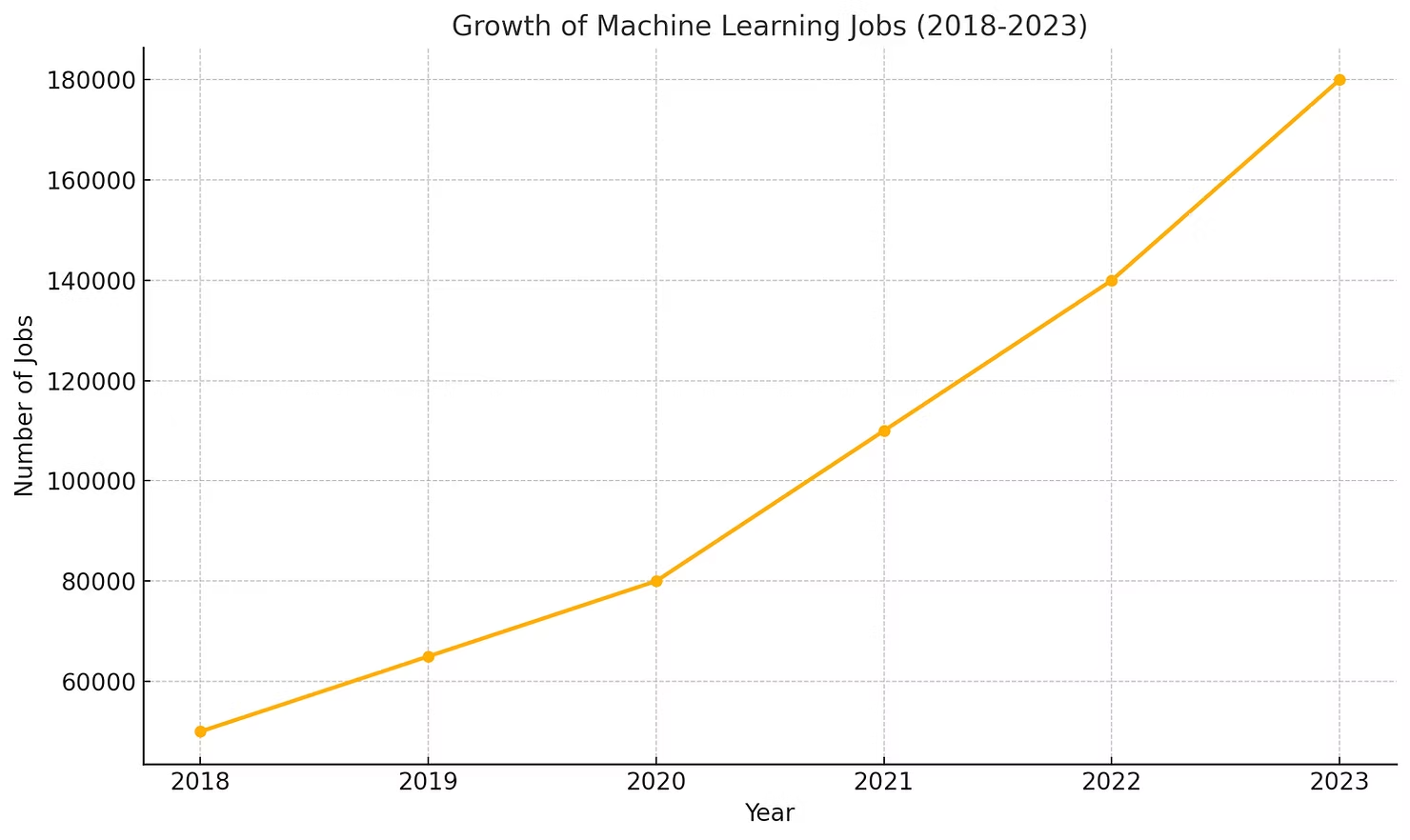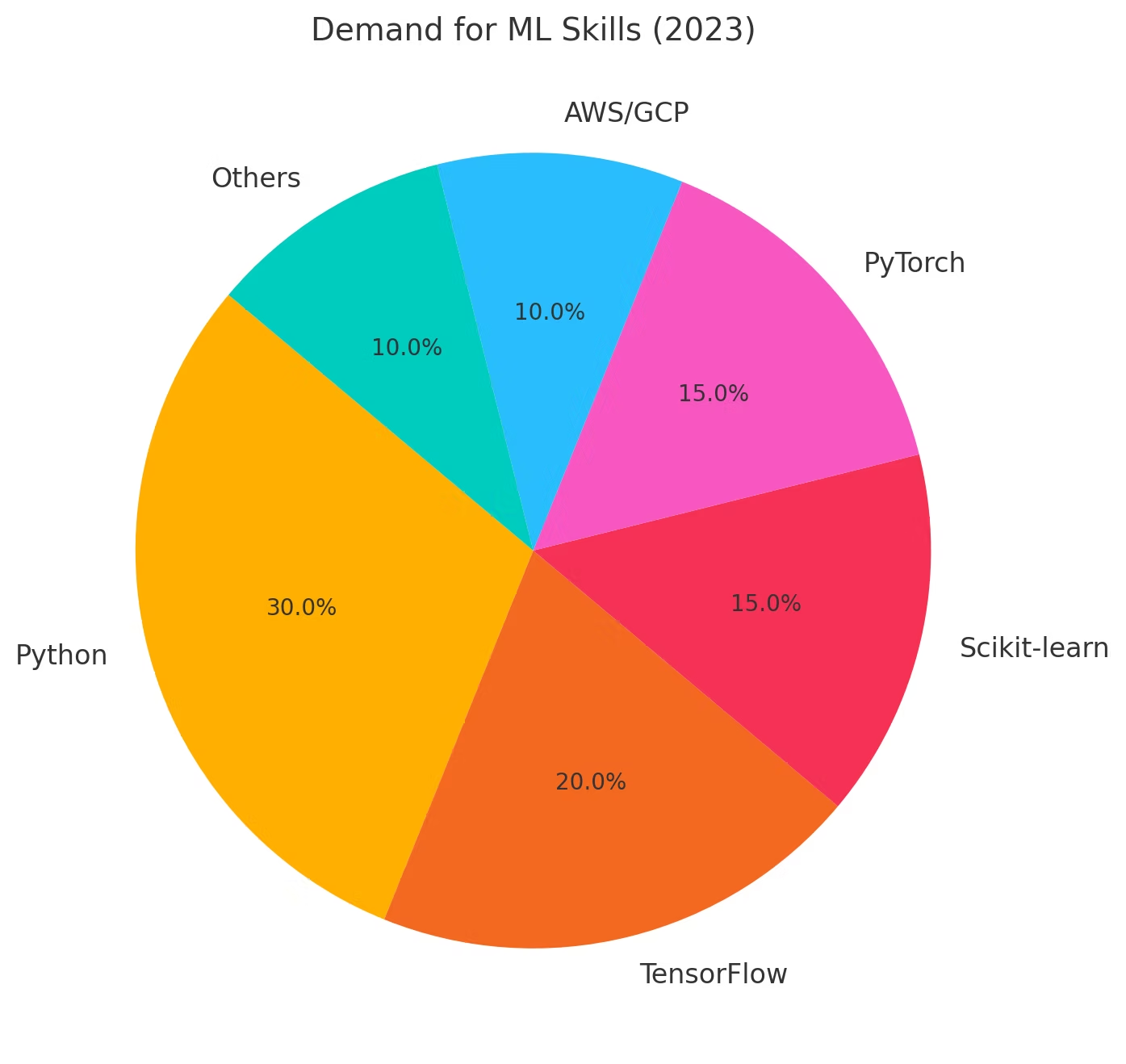1. Introduction: The Rise of Remote ML Work
The workplace revolution of the past few years has redefined how and where we work. While many industries were quick to adapt to remote setups, the tech sector led the charge, making flexibility and location independence the norm. For machine learning (ML) engineers, this shift represents an incredible opportunity. With ML being one of the fastest-growing fields globally, remote work has opened doors to jobs at top companies—without the need to uproot your life or relocate to expensive tech hubs.
Consider this: in 2023, the global AI market was valued at over $300 billion, and machine learning forms the backbone of this industry. Companies are investing heavily in building intelligent systems, and the demand for skilled ML engineers is soaring. But here’s the exciting part: many of these companies are embracing remote work, tapping into a global talent pool to find the best minds in ML.
For engineers, remote work is a game-changer. It’s about more than just working from home; it’s about accessing a world of opportunities, collaborating with diverse teams, and achieving a work-life balance that fosters creativity. In this blog, we’ll explore the world of remote ML jobs, from the skills you need to the companies hiring, and how you can stand out in this competitive field.
2. Why Remote Machine Learning Jobs Are Booming
A. The Growth of the AI/ML Industry
The rise of machine learning is impossible to ignore. In 2022 alone, the number of ML-related job postings grew by 74%, and projections suggest the field will expand by 33% annually through 2030. Why? Businesses across industries—from healthcare to finance—are using ML to automate processes, personalize customer experiences, and drive innovation.

B. How Remote Work Became the Norm
The pandemic accelerated remote work trends, but it’s clear this isn’t a passing phase. A report from FlexJobs found that remote work increased by 159% from 2009 to 2022. In tech, remote-first companies like GitLab and Zapier proved that distributed teams could outperform traditional setups, inspiring other firms to follow suit.
C. Why Companies Favor Remote ML Engineers
Global Talent Pool: Companies can hire the best talent, regardless of geography.
Cost Savings: Eliminating the need for office space and relocating employees reduces expenses.
24/7 Operations: Distributed teams allow companies to operate across time zones, improving efficiency.
D. Why Engineers Love Remote ML Jobs
Flexibility: Work on your own schedule.
Access to Top Companies: Land jobs at firms like OpenAI or Google without moving to Silicon Valley.
Diverse Projects: Collaborate with teams worldwide, tackling problems from multiple perspectives.
E. Regional Hiring Trends
The demand for ML engineers is rising across the globe, with the United States leading in job opportunities. However, remote hiring is enabling companies to tap into talent from regions with emerging tech hubs, such as:
India: Known for its robust talent pool in AI and ML.
Eastern Europe: Countries like Poland and Ukraine are becoming go-to locations for ML engineers, thanks to their expertise in computer science.
Latin America: Companies are hiring in countries like Brazil and Argentina to benefit from time zone overlap with North America.
F. Growing Applications of ML
Machine learning is no longer limited to tech companies. Its applications are spreading into industries like:
Healthcare: AI-powered diagnostics and personalized medicine.
Finance: Fraud detection and automated trading systems.
Retail: Demand forecasting and personalized recommendations.
Manufacturing: Predictive maintenance and quality control.
The breadth of these applications fuels the demand for ML engineers, with many roles being offered remotely.
3. Skills Required to Land a Remote ML Job
Landing a remote ML job requires a combination of technical expertise and soft skills. Here’s what top employers are looking for:
A. Hard Skills
Programming Languages: Python and R are industry standards, while knowledge of C++ and Java can be a plus.
Frameworks: Familiarity with TensorFlow, PyTorch, and Scikit-learn is essential.
Data Engineering: Building and maintaining data pipelines.
Cloud Platforms: AWS, Google Cloud, and Azure for deploying ML models.

B. Soft Skills
Communication: Articulating complex ideas to non-technical stakeholders.
Time Management: Staying productive without direct supervision.
Collaboration: Navigating cultural differences in international teams.
C. Certifications and Qualifications
Certifications from Coursera (like Andrew Ng’s ML course) or platforms like edX can set you apart. Advanced degrees (e.g., MS or PhD) are a bonus but not mandatory.
D. Emerging Skills for ML Engineers
Beyond foundational ML skills, companies are looking for candidates with expertise in:
Natural Language Processing (NLP): Powering chatbots and virtual assistants.
Reinforcement Learning: Critical for robotics and advanced simulations.
MLOps: Managing and deploying models at scale.
E. Practical Experience
Companies value candidates who have worked on:
Large datasets (e.g., social media, financial data).
Real-world problems with measurable impact (e.g., increasing sales, reducing churn).
Cross-functional projects involving stakeholders from non-technical teams.
4. Challenges of Remote ML Work and How to Overcome Them
While remote work offers freedom, it comes with its own set of challenges:
A. Isolation and Team Bonding
Working remotely can feel lonely, especially for engineers used to collaborative environments. Solution: Join virtual ML meetups and use tools like Slack to stay connected.
B. Communication Across Time Zones
Coordinating with a global team can be tricky. Solution: Use asynchronous communication tools like Loom or Notion.
C. Workload Management
Without clear boundaries, it’s easy to overwork. Solution: Set a daily schedule and use productivity tools like Trello or Toggl.
5. Top Companies Hiring for Remote ML Jobs
The global nature of remote work allows engineers to apply for ML roles at prestigious companies worldwide. Here’s a closer look at top companies hiring remotely, the types of roles they offer, and the number of openings:
A. Google
Remote ML Roles: Applied AI Engineers, Research Scientists, ML Infrastructure Developers.
Number of Openings: ~300 globally, with many under the Google Brain and DeepMind teams.
Focus Areas: Search algorithms, autonomous systems, and NLP.
B. Meta
Remote ML Roles: Computer Vision Engineers, AI Ethicists, Applied Machine Learning Scientists.
Number of Openings: ~200 remote-friendly positions.
Focus Areas: AR/VR, recommendation systems, and content moderation tools.
C. OpenAI
Remote ML Roles: Language Model Engineers, Research Scientists, MLOps Specialists.
Number of Openings: ~50 roles globally.
Focus Areas: Large language models, reinforcement learning, and safety research.
D. Amazon
Remote ML Roles: Data Scientists, AI Solutions Architects, Applied Researchers.
Number of Openings: ~500 globally.
Focus Areas: E-commerce personalization, AWS AI services, and logistics optimization.
E. Stripe
Remote ML Roles: Fraud Detection Engineers, Data Engineers, AI Strategists.
Number of Openings: ~100 across regions.
Focus Areas: Payment fraud prevention, credit scoring, and financial analytics.
F. Netflix
Remote ML Roles: Recommendation System Engineers, Data Scientists.
Number of Openings: ~30 roles, remote-friendly.
Focus Areas: Content recommendation, streaming optimization, and user behavior analysis.
G. Smaller Players and Startups
Deepgram: Focuses on speech recognition and hires remotely for NLP specialists.
Hugging Face: Offers roles in open-source NLP development.
DataRobot: Specializes in AI-driven business automation and hires remote ML engineers globally.
H. Platforms Specializing in Remote ML Talent
Several platforms help companies find remote ML talent, including:
Turing.com: Connects companies with ML engineers for contract roles.
Upwork: Hosts freelance ML projects.
AngelList: Focused on startup jobs, including remote ML roles.
6. How to Stand Out as a Remote ML Candidate
A. Build a Portfolio
Participate in Kaggle competitions, and upload projects to GitHub.
B. Network Effectively
Engage in LinkedIn communities and attend virtual conferences like NeurIPS or ICML.
C. Resume Tips
Highlight remote-friendly skills, such as self-management and collaborative tools experience.
D. Ace the Interview
Prepare for coding challenges and be ready to discuss past ML projects in detail.
E. Leveraging Online Communities
Kaggle: Contribute to competitions to showcase your problem-solving skills.
Reddit ML Forums: Engage in discussions and network with professionals.
GitHub: Build a strong presence by sharing repositories and contributing to open-source projects.
F. Virtual Conferences and Workshops
Attend industry events like:
NeurIPS: Gain insights into cutting-edge research.
AI Expo: Network with hiring managers and industry experts.
O’Reilly AI Conference: Participate in hands-on ML workshops.
7. Salary Trends and Market Insights for Remote ML Engineers
A. Regional Salary Breakdown
United States: $170,000–$300,000 annually.
Europe: $70,000–$100,000 annually.
Asia-Pacific: $50,000–$80,000 annually.
B. Growth in Pay
Remote ML salaries are growing at an annual rate of ~7%, reflecting increasing competition for talent.
C. Role-Specific Salaries
Data Scientists: $150,000–$270,000 (US).
ML Engineers: $120,000–$160,000 (US).
AI Researchers: $140,000–$300,000 (US).
8. Tools and Technologies for Remote ML Work
Successful remote ML engineers rely on:
Collaboration Tools: Slack, Zoom, and Miro for team coordination.
ML Platforms: AWS SageMaker, Google AI Platform.
Productivity Tools: Notion, JIRA.
9. Future of Remote ML Jobs
The future is bright for remote ML work. With advancements in collaborative tools and the increasing decentralization of teams, remote ML roles will only grow in popularity. Emerging trends include the use of AI to manage distributed teams and blockchain for secure, decentralized collaboration.
10. How InterviewNode Can Help You Secure a Remote ML Role
At InterviewNode, we specialize in helping ML engineers land their dream jobs at top-tier companies. Here’s how we can help:
Tailored Interview Prep: Practice coding challenges, ML case studies, and behavioral interviews with expert feedback.
Insider Insights: Understand hiring processes at companies like Google and Meta.
Community Support: Join a network of ML professionals for guidance and motivation.
Success Stories: Engineers we’ve worked with have secured roles at top companies—remotely.
Ready to elevate your ML career? Let InterviewNode guide you every step of the way.
11. Conclusion
Remote machine learning jobs represent the future of work. They offer unparalleled flexibility, access to global opportunities, and the chance to work on exciting projects from anywhere in the world. While the competition is tough, with the right skills, preparation, and guidance, you can stand out and land your dream job.






